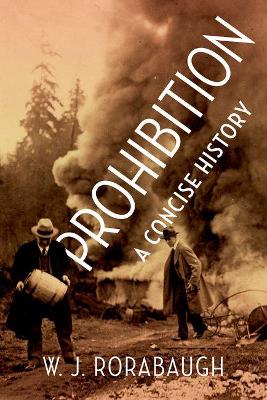Although Americans have always been a hard-drinking people, voters used the democratic process to ban alcohol from 1920 to 1933. This bizarre episode, which uniquely involved two constitutional amendments, has often been humorously recalled, frequently satirized, and usually condemned. The more interesting questions, however, are how and why Prohibition came about, how Prohibition worked (and failed to work), and how Prohibition gave way to strict governmental
regulation of alcohol. This book answers these questions, presenting a brief and elegant overview of the Prohibition era.
During the 1920s alcohol prices rose, quality declined, and consumption dropped. Since beer was too bulky to hide and largely disappeared, drinkers swallowed mixed drinks made with moonshine or mediocre imported liquor. The all-male saloon gave way to the speakeasy, where men and women drank, ate, and danced to jazz.
This book illustrates how public support for prohibition collapsed due to gangster violence and the need for local, state, and federal government alcohol revenue during the Great Depression. As public opinion turned against prohibition, Franklin Delano Roosevelt promised to repeal prohibition in 1932. Legal, taxed beer came in April 1933, and the Twenty-first Amendment was ratified in December 1933. After 1933, state alcohol control boards adopted strong regulations, whose legacies continue to
influence American drinking habits.
With his unparalleled historical knowledge and expertise in American drinking patterns, W. J. Rorabaugh provides an elegant and accessible synthesis of one of the most important topics in US history, showing how a powerful socio-political movement can shift emphasis over time.
- ISBN10 0190689935
- ISBN13 9780190689933
- Publish Date 26 April 2018
- Publish Status Active
- Publish Country US
- Imprint Oxford University Press Inc
- Format Hardcover
- Pages 144
- Language English
